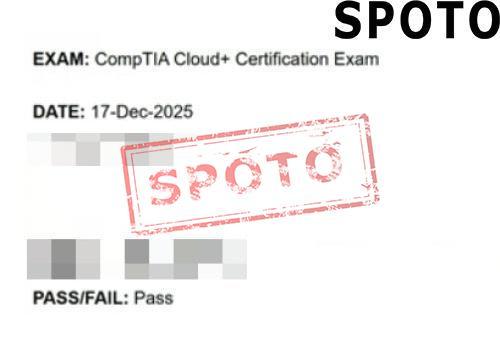
Table of Contents
With the increasing scarcity of IPv4 addresses, the global Internet community is facing an inevitable challenge: a smooth transition to IPv6. This transition is not only about solving the problem of address exhaustion, but also about improving network security, optimizing network performance, and ensuring the sustainability of the Internet. The introduction of IPv6 will bring unprecedented scalability and flexibility to the Internet, providing a solid foundation for future network innovation and applications. Therefore, the transition from IPv4 to IPv6 is not only an inevitable choice for technological progress, but also a critical step in ensuring the long-term prosperity and stability of the Internet.
The Necessity of Ipv4 to Ipv6 Conversion
IPv4, the fourth version of the Internet Protocol, has been the cornerstone of network communications since its introduction in 1981. However, with the rapid development of the Internet, the limitations of IPv4 have gradually become apparent, and there is an urgent need to transition to Internet Protocol 6 (IPv6).
Limitations of IPv4:
- Limited address space: IPv4 uses 32-bit addresses and can only provide a maximum of about 4.3 billion IP addresses. In the era of the Internet of Things (IoT), this number is far from meeting the demand for IP addresses for devices around the world.
- Network Address Translation (NAT) dependence: Faced with insufficient addresses, many networks have to rely on NAT technology to share a public IP address with multiple devices. While this temporarily alleviates the address shortage, it also increases network complexity and limits the implementation of certain network services and applications.
- Security issues: IPv4 is not designed with security in mind, resulting in many security vulnerabilities, such as IP address forgery and man-in-the-middle attacks.
- Scalability: The IPv4 protocol design limits the scalability of the network, and it is difficult to adapt to new network technologies and services, such as mobile networks and cloud computing.
Advantages of IPv6:
- Huge address space: IPv6 uses 128-bit addresses, which can provide nearly unlimited IP addresses, which is enough to meet the needs of future network equipment growth.
- Built-in security: IPv6 design includes IPsec, a network-layer security protocol that provides better data encryption and authentication.
- Simplified header design: IPv6 header design is more concise, which reduces processing overhead and improves network efficiency.
- Improved Mobility Support: IPv6 supports better mobility, allowing users to reconnect to the internet faster when switching networks on mobile devices.
- More efficient routing: The design of IPv6 allows for more efficient route aggregation, reduces the size of the routing table, and improves routing efficiency.
Due to the limitations of IPv4 and the obvious advantages of IPv6, the transition from IPv4 to IPv6 becomes very necessary. This conversion will not only address the current address shortage, but also provide a solid foundation for future network growth, ensuring network security, efficiency, and scalability. With the gradual exhaustion of IPv4 addresses around the world, this conversion has become a critical step in the continued development of the Internet. To keep the Internet alive and innovative, we must take action to actively promote a smooth transition from IPv4 to IPv6.
Ipv4 to Ipv6 Conversion Strategy
In the transition from IPv4 to IPv6, several major conversion strategies have been widely discussed and applied, including dual-stack technology, tunneling technology, and translation technology. Here's an introduction to these strategies and their pros and cons:
Dual Stack
Dual-stack technology refers to the simultaneous operation of both IPv4 and IPv6 protocol stacks on network nodes. This means that the device is able to process both IPv4 and IPv6 packets, enabling the coexistence and interoperability of both protocols.
Merit:
- Good compatibility: Supports existing IPv4 applications and services, as well as new IPv6 applications and services.
- Long-term solution: Provides a smooth transition path for network migration from IPv4 to IPv6.
Shortcoming:
- High cost: You need to maintain two protocol stacks on each node at the same time, which may increase the cost initially.
- Complex management: You need to manage both IPv4 and IPv6 configurations, which may increase the complexity of network management.
Tunneling
Tunneling technology encapsulates IPv6 packets in IPv4 packets so that IPv6 packets can be transmitted over IPv4 networks. This approach allows IPv6 packets to travel through the IPv4 infrastructure until they reach an IPv6-capable node.
Merit:
- Leverage existing infrastructure: Instead of upgrading the entire network at once, existing IPv4 network infrastructure can be leveraged.
- Rapid deployment: IPv6 services can be quickly deployed on IPv4 networks.
Shortcoming:
- Performance issues: The encapsulation and decapsulation process can increase latency and affect data transfer efficiency.
- Restrictive: Tunneling technology is usually only applicable to point-to-point connections and does not support end-to-end IPv6 communication.
Protocol Translation
Translation technology allows direct communication between IPv4 nodes and IPv6 nodes without the need for dual-stack support. It enables interoperability between the two protocols by translating the protocol header and possibly address translation.
Merit:
- Address shortage: IPv4 addresses can be reused to delay the time for IPv4 addresses to be exhausted.
- Simplified deployment: No upgrade of the entire network is required, and it can be implemented gradually.
Shortcoming:
- Compatibility issues: There may be protocol incompatibilities that require additional configuration and testing.
- Performance and reliability: The translation process can introduce additional latency and can impact network performance and reliability.
Common Problems in the Process of Ipv4 to Ipv6 Conversion
The transition from IPv4 to IPv6 is not an easy task and involves updating and upgrading network infrastructure, devices, applications, and services on a global scale. In the process, we will face a series of technical challenges and implementation challenges. Some common technical issues that may be encountered during IPv4 to IPv6 conversion include:
Complexity of Dual-Stack Deployment
- Running both IPv4 and IPv6 stacks in a network can add complexity to configuration and management.
- The need to ensure that all network devices and operating systems support dual-stack technology.
Tunnel Technology Configuration
- Tunneling technologies such as 6to4, Teredo, and ISATAP need to be properly configured to ensure that IPv6 packets can be transmitted over IPv4 networks.
- Improper configuration of tunneling technology may lead to routing issues or performance bottlenecks.
Protocol Conversion Issues
- When using protocol translation technologies such as NAT64/DNS64, compatibility issues may be encountered, especially when it is incompatible with some specific applications or services.
- Protocol conversions may introduce additional latency and complexity.
Address Allocation and Management
- IPv6 address allocation and management is different from IPv4 and requires redesign and configuration of DHCPv6 or static address allocation policies.
- Automatic configuration (e.g., SLAAC) may require additional considerations to ensure security and control.
Network Security
- IPv6 introduces new security features, such as IPSec, and network security policies need to be re-evaluated and configured.
- Some legacy security appliances and policies may not support IPv6 and need to be upgraded or replaced.
App Compatibility
- Some older applications may not support IPv6 or need to be modified to properly handle IPv6 addresses.
- Existing applications need to be tested and updated to ensure they are IPv6 compatible.
Device Compatibility
- Ensure that all network devices, including routers, switches, and firewalls, support IPv6.
- Some older devices may require firmware upgrades or replacements to support IPv6.
SSL/TLS Certificate Issues
- If the website uses SSL/TLS certificates, you need to make sure that they support IPv6 and that the certificates are still valid during the conversion process.
- For pages that do not have an SSL certificate configured, IPv6 conversion may require the HTTP mode to be selected, which may affect pages with certificates.
IPV6 Future Trends
As the IPv4 address space is depleted and the global demand for Internet connectivity continues to grow, the long-term trend of IPv6 is particularly important. Here's a discussion of the future of IPv6 and its potential impact, as well as predictions of where network technology might go in the future:
- Global Deployment Acceleration: IPv6 deployment is expected to accelerate globally in the next few years. Many countries and regions have recognized the importance of IPv6 and have begun to develop policies and incentives to promote its implementation.
- Expansion of the Internet of Things (IoT): With the explosive growth of IoT devices, IPv6's virtually unlimited address space will be key to underpinning this trend. The proliferation of IPv6 will provide billions of new devices with the necessary network identities and connectivity.
- Security Enhancements: Security features built into IPv6 designs, such as IPsec, will help improve the level of security across the Internet. With the increasing emphasis on network security, these features of IPv6 will be more widely used.
- Network Performance Improvements: IPv6's simplified headers and improved routing mechanism will improve the efficiency and performance of the network. In the future, we can expect faster data transfer speeds and lower latency.
- Optimization of mobile networks: IPv6 support for mobility will make mobile networks more efficient and flexible. With the popularization of 5G technology, IPv6 will become a key technology to achieve ubiquitous high-speed mobile Internet.
- Evolution of Cloud Services and Data Centers: Cloud service providers and data centers will increasingly adopt IPv6 to support their services. This will provide a stronger network foundation for cloud computing, storage, and content distribution.
- New apps and services: The proliferation of IPv6 will give rise to new applications and services that will take advantage of IPv6's features, such as larger address space and improved multicast support, to create entirely new user experiences.
- Network Management & Automation: As networks scale, network management and automation will become even more important. The deployment of IPv6 will drive further development of network management tools and automation technologies.
- International Cooperation and Standardization: International cooperation and standardization will play a key role in the rollout of IPv6 in order to achieve seamless connectivity on a global scale. This will facilitate the exchange and coordination of technology between different countries and regions.
- The importance of education and training: As IPv6 technology continues to evolve, the education and training of network engineers and IT professionals will become even more important. This will ensure that there are enough professionals to support IPv6 implementation and maintenance.
Conclusion
In conclusion, the promotion and application of IPv6 is a long-term and arduous task, but it is of great significance to ensure the sustainable development of the Internet and meet the needs of future networks. Through the joint efforts and collaboration of the global Internet community, we have reason to believe that IPv6 will usher in a new era of networking, which is more expansive, secure, efficient, and innovative. Let's work together to embrace this exciting future.










